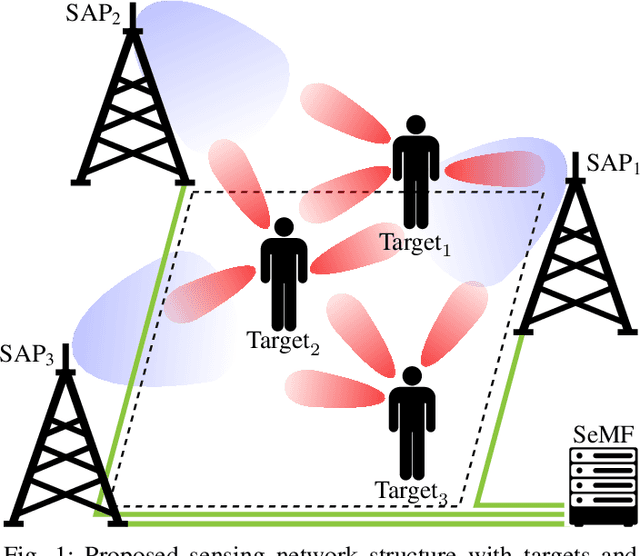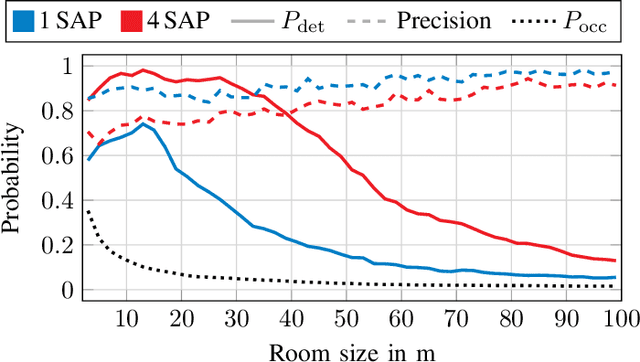Multi-Target Localization in Multi-Static Integrated Sensing and Communication Deployments
Paper and Code
Jun 13, 2023



In future wireless communication networks, existing active localization will gradually evolve into more sophisticated (passive) sensing functionalities. One main enabler for this process is the merging of information collected from the network's nodes, sensing the environment in a multi-static deployment. The current literature considers single sensing node systems and/or single target scenarios, mainly focusing on specific issues pertaining to hardware impairments or algorithmic challenges. In contrast, in this work we propose an ensemble of techniques for processing the information gathered from multiple sensing nodes, jointly observing an environment with multiple targets. A scattering model is used within a flexibly configurable framework to highlight the challenges and issues with algorithms used in this distributed sensing task. We validate our approach by supporting it with detailed link budget evaluations, considering practical millimeter-wave systems' capabilities. Our numerical evaluations are performed in an indoor scenario, sweeping a variety of parameter to analyze the KPIs sensitivity with respect to each of them. The proposed algorithms to fuse information by multiple nodes show significant gains in terms of targets' localization performance, with up to 35\% for the probability of detection, compared to the baseline with a mono-static setup.
 Add to Chrome
Add to Chrome Add to Firefox
Add to Firefox Add to Edge
Add to Edge